Anti-Inflammatory Moves: 12 Gentle Exercises That Are Effective Against Joint Pain
Living with joint pain can mean daily trade-offs: skipping favorite activities, moving gingerly, or simply feeling less like yourself. But here’s a hopeful truth—movement is a remarkable medicine, especially when you choose exercises that soothe inflammation and protect your joints rather than push them to pain. The right kinds of gentle exercise don’t just preserve mobility; they actively fight inflammation, build strength, and ease everyday stiffness. Science shows that consistent, low-impact movement sends “anti-inflammatory” signals to the body, helping to decrease pain, maintain cartilage, and keep you more flexible over time. What if the path to better joint health didn’t require extreme workouts or hours at the gym? The following 12 moves were hand-picked from top physical therapy resources, all designed to fit into routines for older adults, those managing arthritis, or anyone seeking to be kinder to their joints. Each exercise comes with beginner-friendly instructions, smart modifications, and supportive advice—because progress looks different for everyone. Whether you’re trying these moves for the very first time or reclaiming an old routine, remember: every bit counts, and every step is worth celebrating. Let’s get started—gentle, anti-inflammatory relief is within your reach.
1. Gentle Walking Routine

Walking is one of the simplest and most powerful ways to care for your joints. It’s low-impact, helps maintain a healthy weight, and encourages the release of anti-inflammatory chemicals throughout your body. Even short strolls around your home or neighborhood can help reduce stiffness, support cartilage health, and keep muscles active. For those new to exercise or coping with difficult days, start by walking to the mailbox or going from one room to another—small steps truly count. If walking outdoors isn’t an option, try indoor laps using sturdy furniture or a walker for balance. It’s important to let comfort, not a timer, guide your pace. If you have significant pain or trouble with balance, use supportive shoes, a cane, or walk with a companion. Consider dividing walking sessions into a few short periods throughout the day rather than pushing through discomfort. Remember: every step you take is helping ease joint pain, one gentle move at a time.
2. Aquatic Therapy Moves

Aquatic therapy uses the natural buoyancy of water to take pressure off sore joints, allowing movement that might be too painful on land. Even basic pool exercises—like water walking, gentle kicks, or moving your arms in wide circles—can increase strength and range of motion with far less strain. This makes aquatic therapy a favorite for those with arthritis or severe joint pain. You don’t have to be a swimmer; shallow water and a sturdy pool edge are all you need. Some people find classes at local pools, but a few gentle moves during independent pool time work beautifully, too. For people with limited mobility, seated pool exercises or just walking against water resistance create meaningful benefits. Always move at your own comfortable pace—and, if needed, ask a pool staff member or physical therapist for extra guidance.
3. Tai Chi Flow for Joints
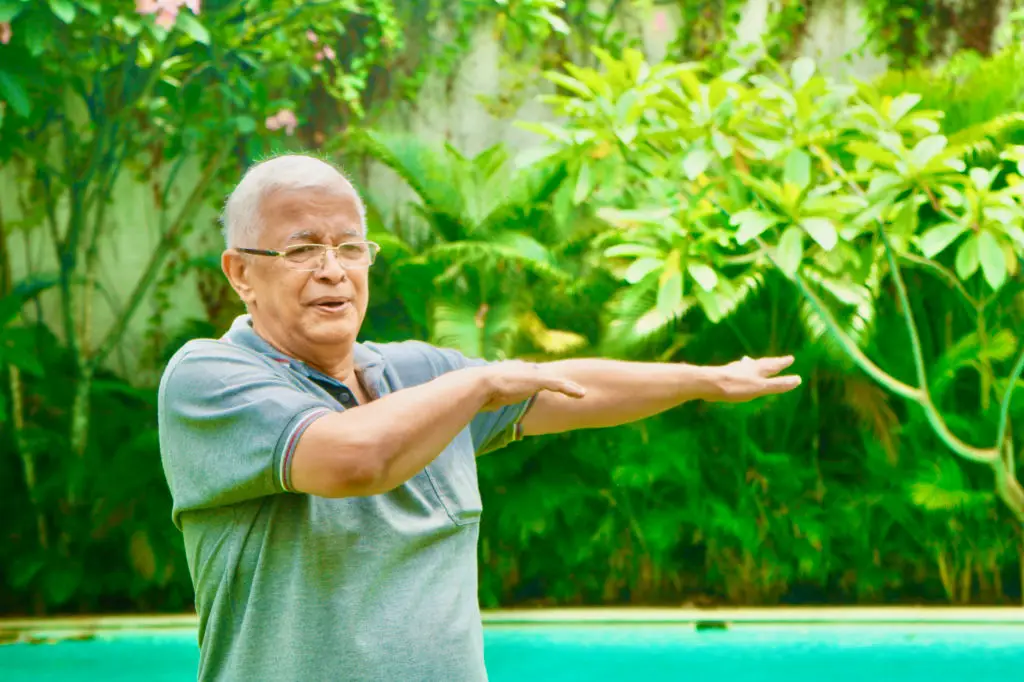
Tai chi, a practice rooted in slow, mindful movement, is renowned for easing joint pain and improving balance. Its flowing motions gently engage every major body part while encouraging deep relaxation—a true mind-body benefit. Clinical research supports tai chi’s ability to decrease arthritis-related discomfort and boost overall mobility. Start with a basic movement such as “wave hands in clouds” or simply shifting your weight side to side with arms moving gently. You can practice tai chi standing or seated, which makes it highly adaptable. Focusing on your breath alongside the movements can further calm inflammation. Many community centers offer beginner-friendly classes, but online videos and instructions can help you start right at home. If in doubt, check with your doctor or therapist about specific movement modifications.
4. Gentle Yoga for Joint Relief

Yoga isn’t about pretzel poses—it’s about honoring your body’s needs. Gentle yoga routines are specifically designed to work with, not against, joint limitations. Focus on restorative and joint-friendly moves such as child’s pose, supported cat-cow stretches, or seated forward bends. Each posture encourages flexibility, relieves tightness, and boosts circulation—all key factors in long-term joint comfort. Yoga’s deep breathing slows the nervous system, which has been shown to help lower inflammation and promote a sense of calm. If stiffness or pain makes certain poses difficult, use props like folded blankets, chairs, or yoga blocks. Never force a position—listen to your body. Practicing even five or ten minutes can help loosen joints and start or end your day feeling more at ease.
5. Seated Resistance Band Strength
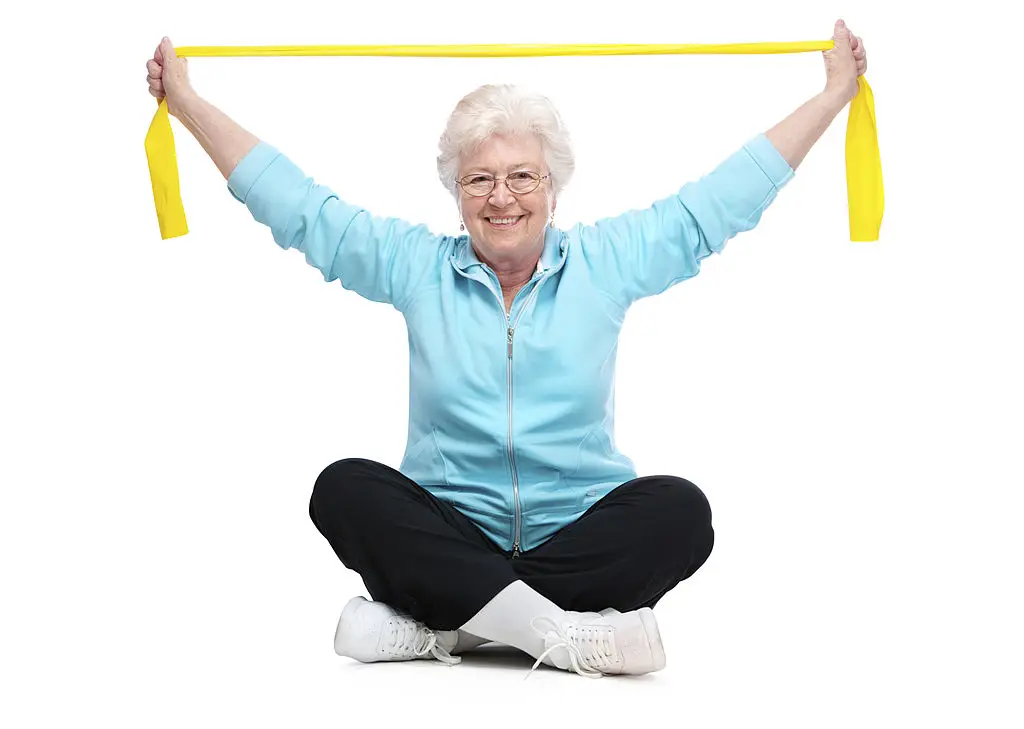
Building a little muscle can provide big help for sore joints, and you don’t have to stand or strain to do it. Seated resistance band exercises—like gentle biceps curls or slow leg presses—work by challenging muscles in a controlled, joint-friendly environment. Using a band adds resistance without impact or sudden jolts. Rest the band under the feet (for arms) or around your shins (for legs), keeping a comfortable grip. Slowly pull or press, hold for a few seconds, then release. For those with hand arthritis, try loop bands or soft-grip handles. If you’re new to resistance work, start with fewer repetitions and a lighter band, resting whenever needed. This boost in strength helps shield your joints during daily tasks and can gradually make moving about feel less taxing.
6. Isometric Quad Set

Isometric exercises are a gentle, smart way to build strength when joint motion is painful or difficult—especially during arthritis flare-ups. The “quad set” targets the front thigh muscle (quadriceps), which supports knee health. Sit or lie down with your leg straight, then gently tighten your thigh muscle while keeping the leg still. Hold for five to ten seconds, then relax. Repeat toward ten reps per leg, moving only as much as comfort allows. Isometrics are invaluable because they let you strengthen muscles while the joint itself barely moves, reducing stress and easing inflammation. If holding your leg straight is tough, try a rolled towel under the knee for support. These can be done in bed, in a chair, or on the sofa—wherever feels most stable for you.
7. Supported Wall Push-Ups
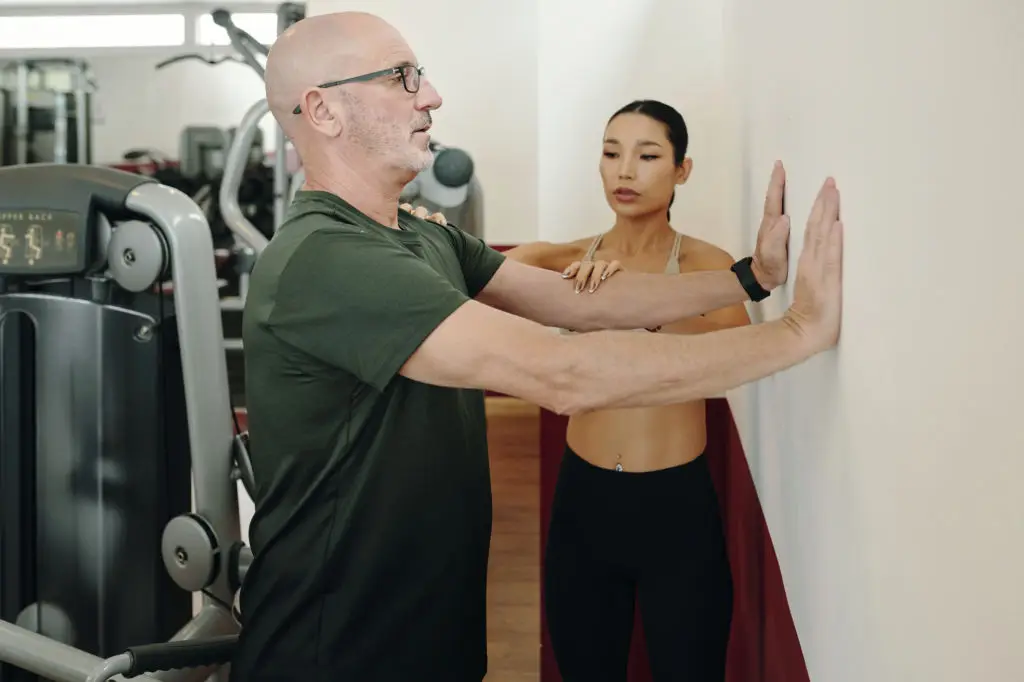
Traditional push-ups can be too intense for sore wrists and shoulders, but supported wall push-ups offer the strengthening perks without the pressure. Stand facing a wall, feet hip-width apart, and place your hands at shoulder height on the wall. Slowly bend your elbows and lean your body toward the wall, then gently press back to start. This move improves arm, shoulder, and even core strength without floor-based strain. If wrists or elbows are sensitive, adjust your hand position or the distance from the wall—closer for easier, farther for slightly more challenge. Aim for smooth, controlled repetitions. Supported wall push-ups help make daily activities like reaching, lifting, or carrying much more manageable by nourishing your upper body muscles in a safe way.
8. Gentle Hamstring Stretch
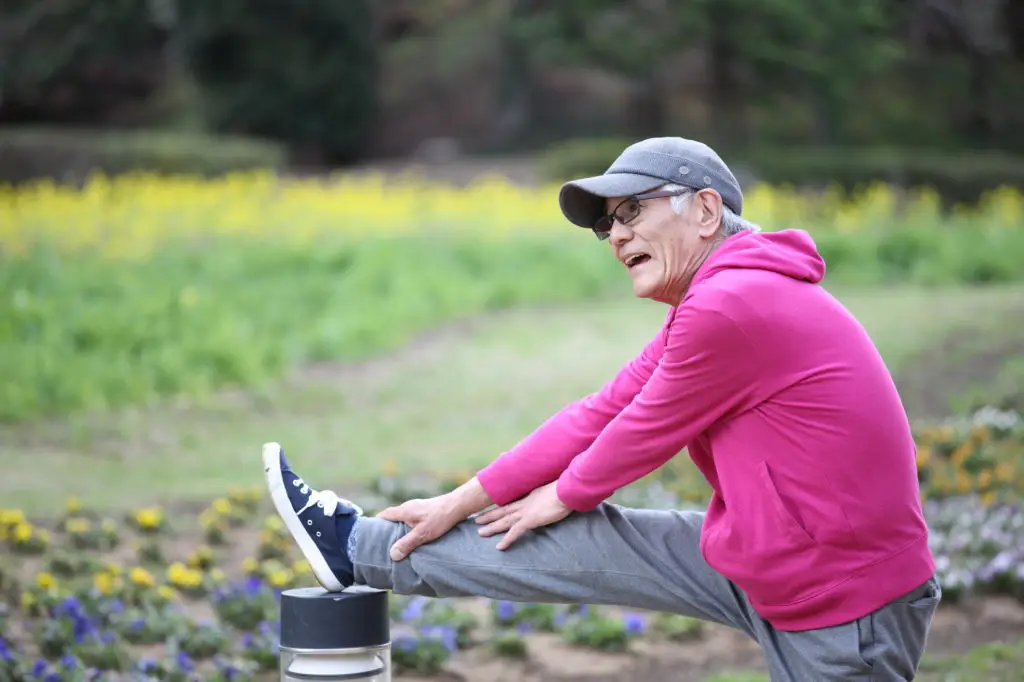
Tight hamstrings can worsen knee and lower back discomfort. This gentle stretch lengthens the back of the thigh and helps support everyday movement. Sit at the edge of a sturdy chair, one heel placed on the floor with your leg out straight. Sit tall and slowly lean forward just until you feel a stretch along the back of your leg—never push into pain. Hold for up to 20 seconds and repeat on the other side. If reaching forward is difficult, try using a towel around the foot for gentle assistance. For those who prefer lying down, a bed or mat works perfectly for the stretch, too. Looser hamstrings mean better walking comfort and less pull on sensitive joints, making this a valuable addition to your joint care routine.
9. Shoulder Rolls and Stretches

Our shoulders often carry the weight of stress and daily activities, especially for those managing joint pain. Gentle shoulder rolls release tension and prime the joints for easier movement. Sit or stand with your arms relaxed, slowly roll your shoulders up, back, and down in a circle a few times, then switch directions. Follow with a gentle reach across your body, using the opposite hand to support a quick stretch. These movements boost circulation, encourage better posture, and gently build up shoulder flexibility. They’re easily modified for frozen shoulder or severe pain—move the arm only as far as comfort allows, and always skip sharp pain. Add a lightweight object like a small towel for variety, or simply enjoy the gentle rhythm as you go.
10. Ankle Circles and Toe Raises
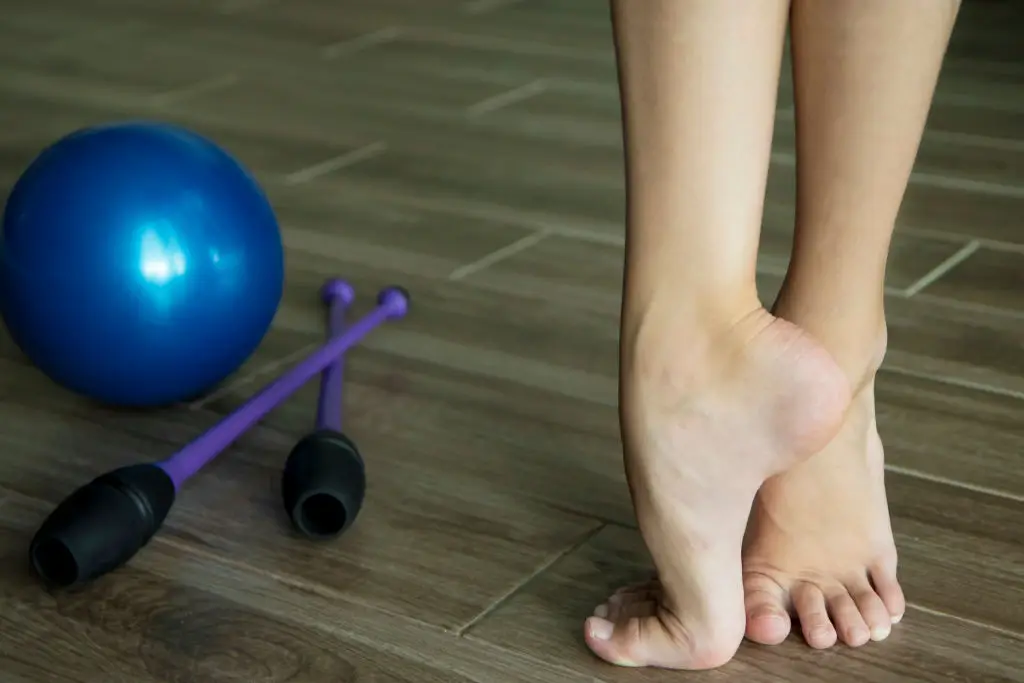
Joints in the feet and ankles often stiffen with age or arthritis, making simple activities less comfortable. Ankle circles and toe raises maintain vital mobility and help prevent falls. Seated or standing, gently lift one foot and slowly describe circles in the air with your toes, 5–10 each way. For toe raises, stand behind a chair and carefully lift your heels, then lower them back down, repeating gently. These easy moves wake up smaller joints, boost blood flow, and make walking smoother. If swelling or severe stiffness is an issue, work within a smaller range of motion until things loosen up. With consistent practice, you’ll likely notice more confident steps and a little more spring in your daily activities.
11. Seated Marching and Step-Tap

Getting your blood flowing is key—even from a chair. Seated marching involves lifting one knee at a time toward the chest in a slow, controlled fashion; add gentle arm swings for a light cardio boost. Alternatively, try step-tap: standing or seated, gently step one foot out to the side then tap back to center, repeating on both sides. Both options are gentle, friendly for balance or fatigue, and suitable for tiny spaces. Modify each move as needed—support your body with the chair arms, take breaks, or move at your own pace. These exercises help improve hip and knee motion, build confidence with safe movement, and can brighten your mood in just a few minutes.
12. Standing Side-Leg Raises

Side-leg raises gently engage hip and glute muscles that stabilize your entire lower body. Stand behind a chair or at a counter for support, then carefully lift one leg out to the side, keeping your toes facing forward. Lower with control, then switch legs. Focus on smooth, no-swing movement—even a small lift counts. If balance feels tricky, keep both hands on your support, or perform a mini-raise instead of a full lift. This move not only reduces risk of falls, but also supports every step you take. Over time, stronger hips mean less strain on knees and ankles, so celebrate every rep—even the modest ones.
Keep Moving Toward Joint Comfort

There’s real power in gentle movement—especially when you honor your body’s unique needs and circumstances. These twelve exercises are not about pushing to the limits, but nurturing the mobility, strength, and resilience your joints crave. Some days will bring more ease than others; that’s not a setback, but a normal part of building long-term wellness. Each small effort—whether it’s a five-minute walk, a few breath-synced stretches, or simply getting up from a chair—is a meaningful step on your joint health journey. Remember, perfection isn’t the goal; progress and self-compassion are. Whenever you’re unsure, consult with a trusted healthcare professional or physical therapist who can help you adapt these moves. With patience, encouragement, and a bit of daily practice, you’ll likely discover less pain, more mobility, and a deeper confidence in what your body can achieve. Your joints have carried so much—now it’s time to care for them with the gentle strength they truly deserve.
